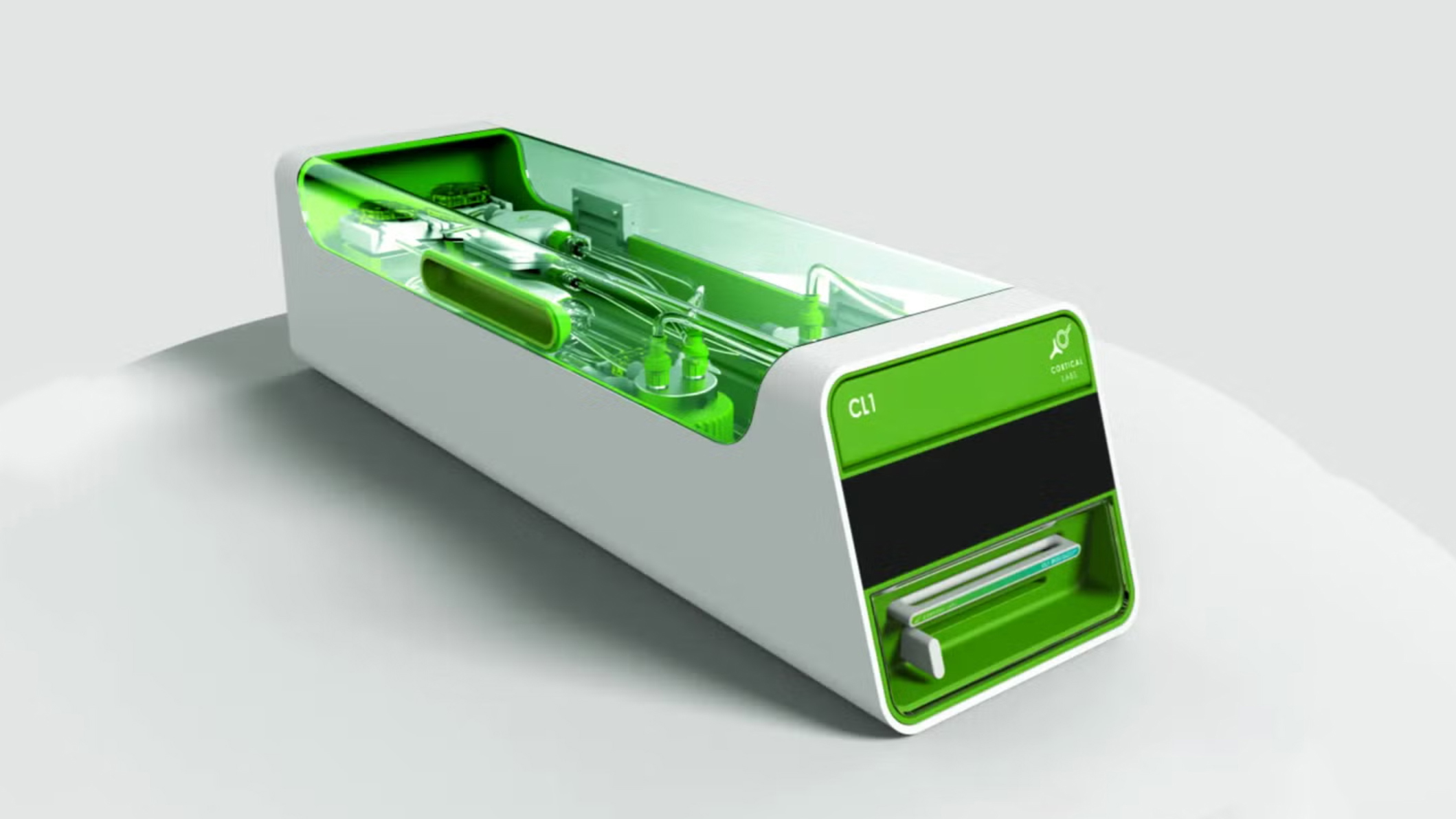World's first 'body in a box' biological computer uses human brain cells with silicon-based computing
Cortical Labs said the CL1 will be available from June, priced at around $35,000.

Australian biotech company Cortical Labs has introduced what it claims to be "the world’s first code deployable biological computer," which combines human brain cells with traditional silicon-based computing. The system, known as CL1, was presented at the Mobile World Congress in Barcelona and is being explored for its potential applications in artificial intelligence (AI) and machine learning.
The CL1 consists of a silicon chip with lab-grown human neurons cultivated on its surface. These neurons are capable of responding to electrical signals, forming networks that process information similarly to a biological brain. The system is designed to allow two-way communication, where electrical impulses stimulate the neurons, and their responses are recorded and analyzed. To maintain the viability of the neurons, the CL1 is equipped with a life-support system that regulates temperature, gas exchange, and other necessary conditions.
A notable aspect of the CL1 is its ability to learn and adapt to tasks. Previous research has demonstrated that neuron-based systems can be trained to perform basic functions, such as playing simple video games. Cortical Labs' work suggests that integrating biological elements into computing could improve efficiency in tasks that traditional AI struggles with, such as pattern recognition and decision-making in unpredictable environments.
Cortical Labs says that the first CL1 computers will be available for shipment to customers in June, with each unit priced at approximately $35,000.
The use of human neurons in computing raises questions about the future of AI development. Biological computers like the CL1 could provide advantages over conventional AI models, particularly in terms of learning efficiency and energy consumption. The adaptability of neurons could lead to improvements in robotics, automation, and complex data analysis.
However, the scalability of this technology remains uncertain. Producing and maintaining neuron-based systems is significantly more complex than manufacturing traditional processors, and ensuring long-term stability poses additional challenges.
Ethical concerns also arise from the use of human-derived brain cells in technology. While the neurons used in the CL1 are lab-grown and lack consciousness, further advancements in the field may require guidelines to address moral and regulatory issues. The prospect of integrating living cells with computational hardware prompts discussions about the boundaries of artificial intelligence and human-like cognition.
Get Tom's Hardware's best news and in-depth reviews, straight to your inbox.

Kunal Khullar is a contributing writer at Tom’s Hardware. He is a long time technology journalist and reviewer specializing in PC components and peripherals, and welcomes any and every question around building a PC.
-
bit_user This is nothing more than a research tool. I don't see how many neurons it has, but I'm pretty sure they're only talking about dozens. For reference, the simplest central nervous systems in the wild have about 100 neurons while the human brain has about 86 billion.Reply
A huge downside any system like this has vs. one that's purely digital is that you can't just load up a neural net model and go. Each one of these has to be trained, before you can use it, and the training will vary and just might not succeed. At that point, presumably you'd throw out the brain chip and get a new one and that's presumably not cheap.
Not to mention that living cells are a dynamic thing. For instance, I wouldn't be surprised if performance varied from day to day and maybe even declined over time, before they eventually die.
BTW, do you need to give them breaks so they can "sleep"? As far as I know, all organisms with neurons require sleep. -
dalek1234 They are just showing a "nothing burger" concept, hoping some sucker will take the bait and invest in their project.Reply -
Rob1C Replybit_user said:This is nothing more than a research tool. I don't see how many neurons it has, but I'm pretty sure they're only talking about dozens. For reference, the simplest central nervous systems in the wild have about 100 neurons while the human brain has about 86 billion.
Might have 62, source: https://github.com/Cortical-Labs/cl-api-doc/blob/main/CL-00. Hello, Neurons.ipynb readable with 16 bit resolution, source: https://github.com/Cortical-Labs/cl-api-doc/blob/main/CL-05.%20Reading%20Raw%20Data.ipynbbit_user said:Not to mention that living cells are a dynamic thing. For instance, I wouldn't be surprised if performance varied from day to day and maybe even declined over time, before they eventually die.
6 months lifespan. -
DriftStorm I am not sure that using biology to build computers of the "future" is desirable.Reply
You only have to look at humans, who are ultimately very unintelligent, their behaviour for example, to realize this.
Furthermore, humans are snails compared to today's computers. -
beyondlogic oh yay lets combine the worst things human cells and a technology what could possibly go wrong lol.Reply
its very creepy
combine this thing with a proper ai possibility of potentially hellscape. -
bit_user Reply
Do you think we should develop better prosthetics for humans? If so, then studying and improving the technology of silicon-neural interfaces would seem worthwhile. That would seem to be one possible application of these machines.beyondlogic said:oh yay lets combine the worst things human cells and a technology what could possibly go wrong lol.
its very creepy
combine this thing with a proper ai possibility of potentially hellscape.
As I've suggested, I think it's impractical to scale up this sort of wet AI. I wouldn't worry about that aspect of it. -
beyondlogic Replybit_user said:Do you think we should develop better prosthetics for humans? If so, then studying and improving the technology of silicon-neural interfaces would seem worthwhile. That would seem to be one possible application of these machines.
As I've suggested, I think it's impractical to scale up this sort of wet AI. I wouldn't worry about that aspect of it.
oh im def in camp of improved prosthetics within a scope and do see the potential but and there's always a but ai is improving its not impractical at all that normal ai could use it itself to build a body if conscious ai becomes a thing scaling up might be impossible for human understanding but as ai gets more advanced there's always a possibility but that's all it is a possibility doesn't mean i damn all science involved.